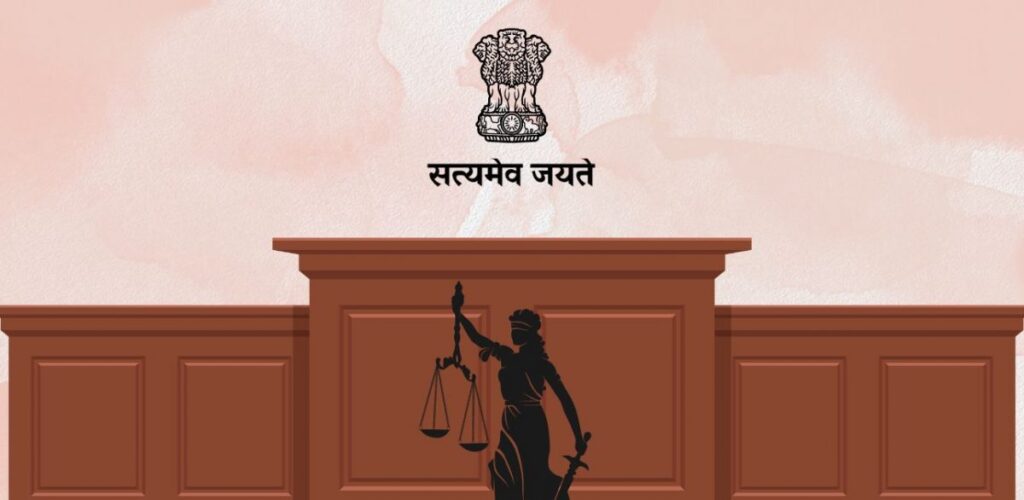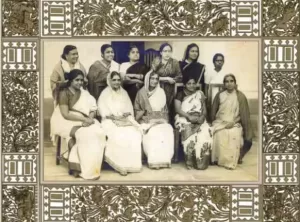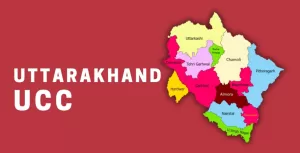Constitutional morality dictates that when majoritarian governments unleash policies advertised to be for the people but which are in essence not only against them but also contrary to the constitutional design, the judiciary should stand up and fight for the rights of the people.
It is also argued that if the executive is happy, the judiciary is not working for the people. A classic example of this was presented in the Emergency years when courts did not live up to the expectations of the people and suspended certain fundamental rights, leading to a constitutional and democratic crisis.
These arguments have a direct bearing on an assessment of the functioning of the Supreme Court under the leadership of Chief Justice of India (CJI) Dr D.Y. Chandrachud and his predecessors.
D.Y. Chandrachud, son of the former CJI Y.V. Chandrachud, took office as the CJI on November 8, 2022. This meant that the incumbent CJI had more than two years to reform the judiciary from the perspective of a liberal-reformist judge that he is touted to be.
Notably, K.G. Balakrishnan was the last CJI in almost 15 years to have held the office of the CJI for nearly two years. When Justice Chandrachud retires on November 10 of this year and passes on the baton to his brother-judge Justice Sanjiv Khanna, he will have been the longest-serving judge in India’s history and one of the greatest orators on the Bench in the 21st century.
However, his tenure as the CJI has been marred by several failures. It has been disappointing to note that the Supreme Court has failed to deliver on what it promised. In other words, the court, and the CJI, have had more words to speak than deeds to do or justice to deliver.
Before and after assuming office: From ‘progressive judgments’ to ‘judicial evasion’
The advent of the 21st century brought a promising academic-judge to the court. His name was Justice D.Y. Chandrachud. Before coming to the court, the judge had been a student at Harvard, a visiting professor at the University of Mumbai, and designated as one of the youngest senior advocates.
Armed with 16 years of experience on the Bench as a high court judge, he was elevated in 2016 as a judge of the Supreme Court of India. He soon became a champion of constitutional morality and protector of the fundamental rights of the people, thus also becoming a favourite of Indian liberals purely on merit.
The judgments he delivered and authored set him apart from his brother-judges as one who was willing to contest the transgressions of the executive. Even in his minority opinion in the Aadhaar Constitutionality Case where he dissented, calling the passing of Aadhaar Acts as money bills “a fraud on the Constitution”, we saw shades of a judge ready to walk an extra mile to reach justice.
Later on, he would go on to author several judgments that upheld constitutional morality and fortified fundamental rights, differentiating himself from the judicial evasionist jurisprudence of the then CJIs through his reform-based “transformative and progressive fundamental rights jurisprudence.”
Justice Chandrachud wrote a separate concurring opinion in Navtej Johar versus Union of India (2018) as well, decriminalising Section 377 of the Indian Penal Code and making consensual same-sex intercourse legal.
He held Section 377 to be an “anachronistic colonial law”, which violated the fundamental rights to equality, freedom of expression, life and privacy. He added that this could only be seen as a first step in guaranteeing LGBTQI individuals their constitutional rights.
Through the Sabarimala Shrine Case (2019), he held that the exclusion of women aged 10–50 from the Sabarimala Temple violated constitutional morality. The decision emphasised that the custom undermined women’s autonomy, liberty and dignity.
Notably, the judge contended that this custom also ran afoul of Article 17, which prohibits Untouchability, as it associated a notion of impurity with women, reinforcing discriminatory practices.
These cases gave hope to the nation that once he assumed office, gone would be the days of judicial evasion and ‘sealed envelope’ jurisprudence developed by his immediate predecessors.
In the backdrop of this, he assumed the role that is coveted by every judge appointed to a high court or Supreme Court— the office of the Chief Justice of India with a healthy two-year tenure.
However, things started to change once Justice Chandrachud took oath as the CJI. His actions no longer matched his stated intentions. The government’s attempts to undo the court’s rulings, either through an ‘act of the executive’ or ‘Acts of Parliament’, were allowed to overrule the Supreme Court, often in suspicious circumstances.
Collegium, diversity and associated lacunae
The CJI is the chief selector in the collegium, the primary function of which is to recommend appointments and transfers of judges in the higher judiciary. This includes the appointment of judges to the Supreme Court and the transfer and appointment of judges in the high courts.
For the recommendation of Supreme Court judges, the collegium consists of the CJI and the other four senior-most judges of the Supreme Court. The collegium for appointment of high court judges consists of the three senior-most judges of the Supreme Court, including the CJI.
When a vacancy arises in the higher judiciary, the collegium discusses and recommends names for appointment. The recommendations are sent to the President of India for approval.
At present, the Supreme Court collegium comprises, besides the CJI, Justices Sanjiv Khanna, B.R. Gavai, Surya Kant, and Aniruddha Bose. Since Dr D.Y. Chandrachud took office as the CJI, 15 judges have been appointed to the Supreme Court.
As of February 1, 2024, while the Supreme Court has a full working strength, there were 331 vacancies across states in the higher judiciary against the sanctioned working strength of 1,114. Vacancies as on March 1 were reported to be 333.
In his tenure, starting November 2022, the incumbent CJI has not nominated any woman to the Supreme Court of India. It is to be noted that the pool of candidates from which the CJI and his brother-judges in the collegium can select and nominate judges comprises advocates from the Bar who need to have impeccable knowledge and performance of the law, the incumbent judges or law officers of the high courts, and even reputed academicians.
The last woman to be appointed as a judge of the Supreme Court of India was Justice Bela M. Trivedi, who had served as law secretary in the Gujarat government when Narendra Modi was the chief minister.
On January 24, 2024, the Union appointed Justice Varale as a judge of the Supreme Court. Justice Varale became the third Scheduled Caste judge in the Supreme Court, the other two being senior judges B.R. Gavai and C.T. Ravikumar.
More attention is paid to the representation of different states than gender and caste diversity. At present, there are three judges from the Scheduled Class communities and three women judges at the Supreme Court.
Independent or not: The conundrum of the ratio in Anoop Baranwal
The Parliament recently passed the Chief Election Commissioner and Other Election Commissioners (Appointment, Conditions of Service and Term of Office) Act, 2023, which has essentially overruled the Supreme Court’s decision in Anoop Baranwal versus Union of India, which had held that the President shall appoint election commissioners and the Chief Election Commissioner on the recommendation of a three-member committee comprising of the Chief Justice of India, the Prime Minister and the leader of the Opposition or the leader of the single largest party in the Lok Sabha.
The Supreme Court had reasoned that there must be a distinct consideration of the independence of the election commission and its officials and the balance of power must not be skewed in the favour of the government.
The court noted, “A person, who is weak-kneed before the powers that be, cannot be appointed as an election commissioner. A person, who is in a state of obligation or feels indebted to the one who appointed him, fails the nation and can have no place in the conduct of elections, forming the very foundation of democracy. An independent person cannot be biased.”
Soon after, however, the Supreme Court’s ratio was prima facie violated by the new law of appointment of election commissioners as the committee appointing the election commissioners and the Chief Election Commissioners saw the replacement of the CJI as a member of the committee with a “Union minister nominated by the Prime Minister”, essentially giving the ruling party’s government ‘two bites at the apple’ or two voices in the committee.
Since Union ministers enjoy their posts at the pleasure of the Prime Minister, the committee becomes arbitrary due to the existence of this bias. This raises the question, would someone who already “feels indebted to the one who appointed him” ever go against their wishes? And would they resultantly not appoint another person, as an election commissioner or Chief Election Commissioner, as the case may be, who again shall be “indebted to the one who appointed him”?
In the background of this, the government has already appointed two new election commissioners through the new law. The Supreme Court eventually refused to stay the law while also refusing to stay the appointments of new election commissioners.
Thus, the subject-matter that started the litigation in Anoop Baranwal, and the principles of constitutionalism based on which this vacuum in the law was being remedied, were, after all this time, eventually negated despite a strong judgment of the Supreme Court.
A ‘state’ and a chief minister in crisis
Another situation where a constitutional problem arose of the Court’s own making was in the Maharashtra assembly crisis case, wherein, in the end, despite the chief minister being in the right according to the Supreme Court’s interpretations of the election law, no justice was delivered, and despite the illegal operation of law and erroneous procedures of the governor, the situation could not be reversed as the chief minister had resigned.
The court held: “The governor was not justified in calling upon Mr Thackeray to prove his majority on the floor of the House because he did not have reasons, based on objective material before him, to reach the conclusion that Mr Thackeray had lost the confidence of the House.
“However, the status quo ante cannot be restored because Mr Thackeray did not face the floor test and tendered his resignation.”
In hindsight, it could be argued that the Order of the court which asked the chief minister to face the floor test was not only short-sighted and harmful, effectively uprooting a coalition government, but also damaging to the long-term electoral faith of the common man.
By extension of the Court’s observation, however, it could also be argued that the chief minister refused to be a part of an illegal and perhaps even unconstitutional series of events, according to his own understanding.
But if he had given in to the illegal action of the governor after the Supreme Court’s Order to have the floor test done, by which the judiciary enabled illegality, the chief minister would have lost for a short while but his government could have been restored, by the court’s own concluding words, post-judgment.
But since the chief minister chose to do what to him was moral and ethical, he lost his case and justice to him was never done by the court.
This entire constitutional crisis and conundrum could have been avoided by the court if it had delivered a strong clarification on the law on anti-defection.
The court’s dilly-dallying on the issue must be seen in the context of the political crisis developing in other states such as Karnataka and Madhya Pradesh over the last few years.
Illegal but fine: The ED chief’s appointment
In the Enforcement Directorate (ED) case as well, the Supreme Court ended up facilitating the illegal acts of the government. While the court held that the extension of appointment of the director of ED is illegal, it twice extended the tenure of the same person to hold the office, first under the garb of a “smooth transition”, then secondly for “public interest”, eventually harming its own value of the precedent and its strictness by not holding the State responsible under contempt of court for non-compliance with Supreme Court’s earlier Orders.
CJI Chandrachud: Carrying on a legacy of forgotten constitutionalism?
The Chief Justice of India is portrayed as the first among the equals. However, the reality seems to be far from that. Within the domain of administrative duties listed in Supreme Court Rules, 2013, the CJI is designated the master of the roster. This refers to the privilege of the Chief Justice to constitute Benches to hear cases, i.e, the CJI gets to decide which case will be allotted to which particular judge or set of judges.
Six years ago, in an unprecedented set of events, four senior-most judges of the Supreme Court publicly alleged that the sitting CJI Dipak Misra, nephew of former CJI Justice Ranganath Mishra, assigned cases of national and institutional consequence to benches of his preference without any apparent rational basis. The situation escalated enough for the Opposition to move an impeachment motion in the parliament.
Another CJI and presently a Rajya Sabha Member, Justice Ranjan Gogoi, son of former Chief Minister of Assam Kesab Chandra Gogoi, who was among the four above-mentioned judges, misused his position as the master of the roster when faced with allegations of sexual harassment while holding the top post.
Under Chief Justice U.U. Lalit, son of former Additional Judge of the Nagpur Bench of the Bombay High Court Justice U.R. Lalit, a special Saturday hearing was convened to keep Professor G.N. Saibaba incarcerated. This special Bench was convened when Justice Chandrachud (as he was then) admittedly had refused to stay the High Court order.
CJI Lalit, utilising his power of the master of the roster, constituted the Bench consisting of Justices Bela M. Trivedi and M. R. Shah to “specially hear” the case. They stayed the acquittal and asked the Nagpur Bench of the Bombay High Court to rehear the case. The Nagpur Bench again acquitted Professor Saibaba but he had to stay in prison as an undertrial for two more years.
Given this background, expectations were rife from CJI Chandrachud to reform the Supreme Court. What followed, however, was an even more worrisome trend.
Politically sensitive cases and cases revolving around the right to life and liberty as enshrined under Article 21 of the Constitution of India, still went to certain selective Benches, which invariably ruled in ‘favour’ of the State.
Article 14 highlighted that at least eight politically sensitive cases went to the Bench led by Justice Bela Trivedi in violation of the Supreme Court Handbook on Practice and Procedure and Office Procedure. This includes the petition of Umar Khalid, accused under the UAPA, whose case was listed under Justice Aniruddha Bose initially, only to be later listed under Justice Trivedi’s Bench.
Similarly, Deputy Chief Minister of Karnataka DK Shivakumar’s case was also transferred from the Bench led by Justice Bose to the Bench led by Justice Trivedi. Moreover, cases relating to communal violence in Tripura in 2021 were reallocated in 2023 to the Bench led by Justice Trivedi, bypassing 15 more senior judges.
All this happened under the ‘watchful’ eyes of CJI Chandrachud.
Chaos or solutions: Where does the court go?
In all these cases, the 50th CJI has continued the failures of previous CJIs into his tenure. Nevertheless, Justice Chandrachud still has considerable time left in his tenure before Justice Khanna takes over as CJI towards the end of this year.
The first step is to recognise that according to The Third Judges Case, the principle of independence of judiciary is safeguarded by the collegium system by maintaining transparency in the higher judiciary through the establishment of a uniform system of appointment and transfer of judges.
The privilege of the master of the roster does not allow for transparency and is thus an antithesis to The Third Judges Case. It is arbitrary and leaves too much to the unaccountable discretion of one person, the CJI. Therefore, the Supreme Court needs to abolish the provision for the ‘master of the roster’.
The second step is to make a provision for the collegium to form permanent Constitutional Benches for the coordination of cases and bring clarity in the approach of the Court. This will ensure multiple things.
First, uniformity will be maintained by the Supreme Court, increasing the precedential value of its judgments as Constitutional Benches will not see multiplicity of ratios as per changing ‘discretion’.
Second, in case of similarity in interpretation of a substantial question of law, the Benches would have their work already cut out and there shall be no arbitrary transfer-listing of cases except by it going back to the collegium for re-allotment, following due process.
Finally, in cases where the State tries to outsmart and overpower the Court, such as in Anoop Baranwal or in the case of the appointment of the director of ED, the collegium shall use the united approach of Constitutional Benches to parry the maneuvers of the State.
This will also help in cases where the short-sightedness of the Supreme Court, as happened in several cases of defections including the Maharashtra Assembly crisis, damaged the spirit of constitutionalism and justice.
(Toshan Chandrakar is a research scholar at the Hidayatullah National Law University and is currently working as an assistant professor at Amity University, Chhattisgarh. Courtesy: The Leaflet, an independent platform for cutting-edge, progressive, legal & political opinion, founded by Indira Jaising and Anand Grover.)




